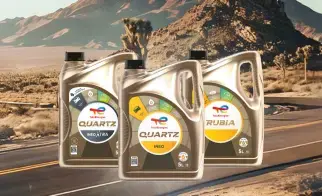Car leaking coolant? Find, diagnose, fix and repair a coolant leak
Coolant is a key part of your car’s engine. A mixture of antifreeze and water, it keeps the cooling system flowing effectively, raising the boiling point of the water while simultaneously reducing its freezing point.
Without coolant, your car can become damaged and break down from everyday usage or the extremes of hot and cold weather that are becoming ever more frequent. That means a coolant leak can be an especially expensive and frustrating thing for drivers to experience. And what’s more, the smell and taste of coolant can be attractive to animals yet the ethylene glycol in it is toxic, so a leak can put your dog or cat at risk too.
Thankfully though, these problems can be avoided if a leak is fixed quickly. In this guide, we explore how you can diagnose whether your car has a coolant leak, provide coolant leak repair tips, and help you fix a coolant leak in the best possible way.
How to identify whether your car is leaking coolant
To work out whether your car has a coolant leak, you need to properly diagnose the problem. Once you’re safely parked, check the following steps to find out whether your car is leaking coolant.
- Sweet smell - Antifreeze and coolant are sweet-smelling. That means if you smell it before or after driving, there may be a coolant leak. To make sure you’re smelling the right thing, grab a bottle of coolant and clue yourself up on the odd aroma so you can quickly identify its presence in the future.
- Coloured puddles - Coolant can come in blue-green, pink, orange, or lime-green, so if you see a puddle of this under your car after you’ve left it stationary for a little time, then your car may be leaking coolant. Again, make sure you know exactly which type of coolant your car uses before you diagnose the issue, and to make sure it’s your coolant, not a neighbour’s, drive your car so it warms up completely, and then park it on a clean, dry section of your driveway before you look for puddles later on.
- Heat problems - If you begin seeing your vehicle’s dashboard temperature gauge rising, this is due to the coolant becoming hotter. Less coolant means a smaller volume of coolant to dissipate heat, so this may be a symptom of a coolant leak too.
- Dashboard lights - Your dashboard lights can also indicate a coolant leak. Look out for the coolant warning light and ‘check engine’ light, as these are often the most likely to show if you have coolant issues.
How to find the source of the coolant leak
If you’ve discovered any of the above indications, it’s time to work out where the coolant leak is coming from.
Here, you need to properly prepare your car, so drive until it’s warmed up, then park it on a clean, dry, and flat driveway. It’s crucial that you make sure the system has cooled down before you open the bonnet, so wait for an hour or two to give the fluid time to chill, then check off the following:
- Find the pool - As we said before, a pool of coolant can mean a leak, but its location can help diagnose exactly which part of the system is leaking. If the puddle is towards the front of the car, then the problem may be in the engine bay or radiator. Open the bonnet and begin using your eyes - and nose - to find the source of the leak. As well as leaking coolant, residues the same colour of your car’s specific type of coolant can also be a giveaway.
- Smell the source - As well as sniffing out the source of the coolant leak in the engine bay, if you smell coolant in the cabin, then it may be a problem with the car’s heater core, which also contains some coolant. This can be a tough problem to fix on your own, given its location deep behind the dashboard, so consider a mechanic if you encounter this problem.
- Check the tank - If you can’t find out where your car is leaking coolant from, then double check the coolant tank, opening the cap with a cloth while the car is cool. Top it up to the maximum level, then take the car for a drive. Let the car and tank cool again, then check the reservoir. If the level hasn’t dropped, then a coolant leak is unlikely. If it’s very low or empty, then it’s clear your car is leaking coolant and you should take your car to a technician.
How to fix a coolant leak
If you've found the source of the coolant leak, then you may be able to fix it on your own. Leaky hose clamps can often be tightened by hand or wrench, and if a small amount of coolant is dripping from the hose itself, it may be possible to replace it, if you are able to find the part and are happy following a manual or online tutorial.
That said, many coolant leaks can be in difficult-to-reach areas of the engine, such as deep within the engine bay, behind the dashboard, and the radiator itself. That means if you don’t feel confident performing a coolant leak fix on your vehicle, it’s always a good idea to get professional assistance from your mechanic.
The one thing you shouldn’t do, however, is continue to drive your car. If you continue topping up a car leaking coolant, you’ll not only waste your money on fluid, but pollute your drive and the roads, putting animals at risk in the process. And if you let your coolant leak dry, your engine may overheat from hot weather or usage, or seize up due to freezing cold temperatures. Each of these can end up harming your components, resulting in costly garage bills.
Choose TotalEnergies coolant and antifreeze
TotalEnergies has a wide range of antifreeze and coolant products available to motorists. COOLELF coolant and GLACELF antifreeze are designed to not just cool engines and stop them from seizing up, but to protect parts from corrosion, improve part lifespans, keep cooling systems clean, and much more.
COOLELF RANGE
GLACELF RANGE
You might also be interested in
Find the right oil for my car



